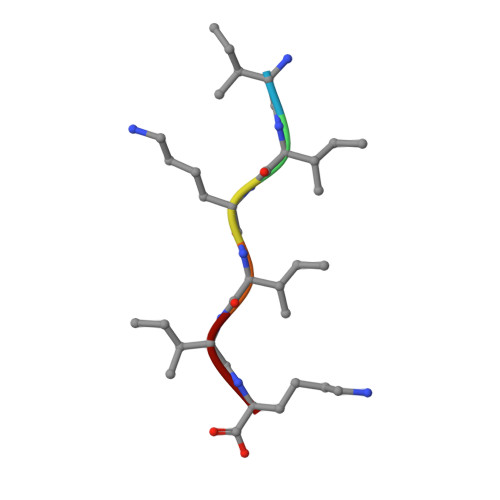Extreme amyloid polymorphism in Staphylococcus aureus virulent PSM alpha peptides.
Salinas, N., Colletier, J.P., Moshe, A., Landau, M.(2018) Nat Commun 9: 3512-3512
- PubMed: 30158633
- DOI: https://doi.org/10.1038/s41467-018-05490-0
- Primary Citation of Related Structures:
6FG4, 6FGR, 6FHC, 6FHD - PubMed Abstract:
Members of the Staphylococcus aureus phenol-soluble modulin (PSM) peptide family are secreted as functional amyloids that serve diverse roles in pathogenicity and may be present as full-length peptides or as naturally occurring truncations. We recently showed that the activity of PSMα3, the most toxic member, stems from the formation of cross-α fibrils, which are at variance with the cross-β fibrils linked with eukaryotic amyloid pathologies. Here, we show that PSMα1 and PSMα4, involved in biofilm structuring, form canonical cross-β amyloid fibrils wherein β-sheets tightly mate through steric zipper interfaces, conferring high stability. Contrastingly, a truncated PSMα3 has antibacterial activity, forms reversible fibrils, and reveals two polymorphic and atypical β-rich fibril architectures. These architectures are radically different from both the cross-α fibrils formed by full-length PSMα3, and from the canonical cross-β fibrils. Our results point to structural plasticity being at the basis of the functional diversity exhibited by S. aureus PSMαs.
- Department of Biology, Technion-Israel Institute of Technology, Haifa, 3200003, Israel.
Organizational Affiliation:


















